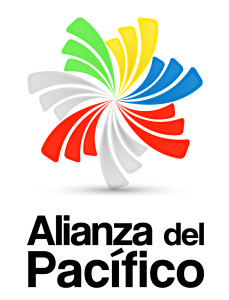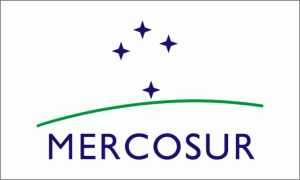Latin America Split by Blocs
 Philosophies concerning the most effective way to develop an economy that benefits the state and the citizenry have risen and fallen in various nations over the past several centuries. In the modern globalist era, Latin America serves as a microcosm of that struggle through the two trade systems vying for dominance in the region: leftism and capitalism. Mercosur, an economic trade union spanning most of South America’s Atlantic coast, is a protectionist union seeking to encourage trade between member states while discouraging foreign economic intervention. Conversely, Latin America’s Pacific Union spans most of the continents Pacific coast reaching from North America to the Southern Cone. It encourages trade coming from both its members and other nations.
Philosophies concerning the most effective way to develop an economy that benefits the state and the citizenry have risen and fallen in various nations over the past several centuries. In the modern globalist era, Latin America serves as a microcosm of that struggle through the two trade systems vying for dominance in the region: leftism and capitalism. Mercosur, an economic trade union spanning most of South America’s Atlantic coast, is a protectionist union seeking to encourage trade between member states while discouraging foreign economic intervention. Conversely, Latin America’s Pacific Union spans most of the continents Pacific coast reaching from North America to the Southern Cone. It encourages trade coming from both its members and other nations.
Formed out of the 1991 Treaty of Asunción, Mercosur is a protectionist trade bloc founded by Brazil, Argentina, Paraguay, and Uruguay. While the bloc has a stated goal of expanding membership to the entirety of South America, the only nation to attain permanent membership since Mercosur’s founding has been Venezuela. This move proved to be controversial and sparked tension within the bloc.
Venezuela was brought into Mercosur as a permanent member in 2012 following Paraguay’s temporary suspension from the bloc. Other Mercosur members suspended Paraguay’s membership in the bloc as punishment for, what they viewed, as the undemocratic impeachment of Paraguayan president Fernando Lugo over charges of nepotism and orchestrating the deaths of seventeen protestors at the hands of police. Notably, in 2004, Paraguay blocked Venezuela’s first bid for membership, citing a lack of democracy in the nation. Following Venezuela’s 2012 promotion to full membership, observers have noted increased tensions among the bloc as Venezuelan presidents Hugo Chávez and Nicolas Maduro have pushed Mercosur further from free trade. Inter-bloc relations were already strained following the 2009 creation of the Bank of the South, which was viewed as Chávez’s attempt to expand his own influence in the region at the expense of the World Bank and International Monetary Fund’s. With Venezuela entrance to Mercosur, the bloc has split along financial lines, with Brazil trading more with Argentina and Venezuela, pushing the economically smaller Paraguay and Uruguay further from the main three members.
Chile, Bolivia, Peru, Columbia, and Ecuador are the only other Latin American nations that are involved in the bloc with associate memberships. This status denies them full voting rights or complete access to the protected member markets. Of the five, Bolivia is the only serious candidate for full membership, but it, along with the other associate members, have repeatedly expressed concern over the high tariffs Mercosur imposes on non-member imports. The situation has been exacerbated by continued attempts from full member Argentina to raise the tariff from 12 percent to 35 percent, the highest rate allowed by the Word Trade Organization. Bolivia fears the spike in its tariff rates due to membership would cause price jumps. Brazilian attempts to exempt Bolivia from raising its tariffs have been blocked by Paraguay and Uruguay, as they were denied similar exemptions as part of negotiations for a bilateral trade agreement with the United States.
The Pacific Alliance, created through a 2011 agreement between Mexico, Peru, Colombia, and Chile, is Mercosur’s provides an alternative economic regime to Mercosur. Developed as a free trade based bloc, as of 2013 the member states have eliminated 90 percent of the tariffs on their merchandise trade, with agreements in place to incrementally remove the remaining 10 percent over the next seven years. With this economic integration, the Alliance seeks to forge closer relations between member nations through a combination of free trade, visa-less travel, shared stock exchanges, and joint diplomatic representation abroad.
Independent of their differences, Mercosur and the Pacific Alliance jointly represent 90 percent of Latin American and the Caribbean’s gross domestic product, and 80 percent of the region’s trade. Over the past several years, however, the proportion of global trade each group commands has stagnated. Consequently, social and political issues have begun to penetrate into the conversations surrounding both groups. Among Mercosur members, disagreement over the strength of the tariffs, the elevated number of the social programs, and Venezuela’s membership have exposed rifts across the bloc. Due to its novelty, the Alliance has managed to avoid fracturing relations based on political differences by focusing solely on expanding trade.
Beyond the bounds of Latin America, the Pacific Alliance’s economic success has drawn numerous observer states including Japan, the United States, China, and India. Conversely, the protectionist model maintained by Mercosur has failed to draw international interest to the group. As a result, Mercosur has only formed trade relations with Israel, the Palestinian Alliance, and a tentative agreement with China.
Looking forward, Mercosur maintains a more uneven standing as a trade bloc given its stagnating growth, lack of foreign interaction, and internal strife compared to the newer and more stable Pacific Alliance. However, the capacity of each group to adapt to changing global economies will determine each group’s continued viability.

